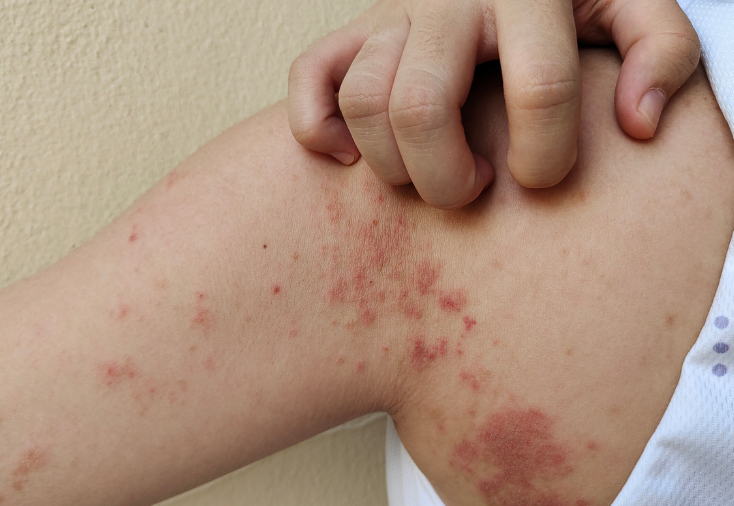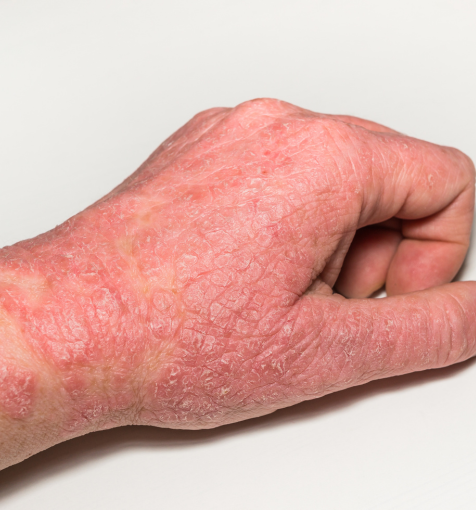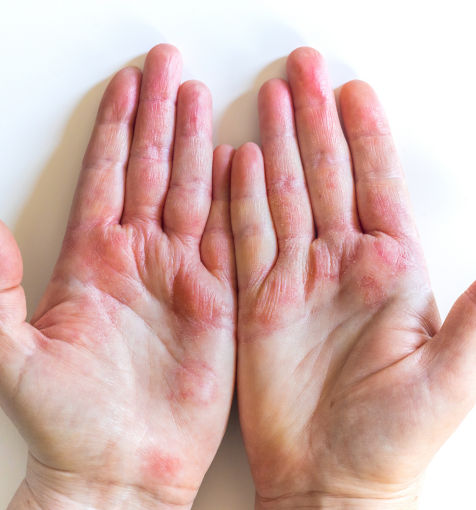Professional Diagnosis and Treatment for Eczema in New Jersey
Eczema is a group of chronic inflammatory skin conditions that affects more than 30 million Americans. Characterized by itchiness, dry skin, redness, rashes, scaly patches, and sometimes blisters or secondary infections, eczema can significantly impact both comfort and quality of life. At Skin & Laser Center of NJ, our team provides expert care to help patients of all ages manage their symptoms, reduce flare-ups, and restore skin health through personalized treatment plans.


Eczema is not caused by a single factor but rather a combination of genetic, immune, and environmental influences. The exact cause often varies from patient to patient, but common contributing factors include:
Overactive immune system: Leads to inflammation that causes redness and itching
Genetics: A family history of eczema, allergies, or asthma increases risk
Environmental irritants or allergens: Soaps, detergents, pollen, dust, and pet dander can trigger flare-ups
Stress: Emotional stress can worsen symptoms and prolong outbreaks
Although eczema is especially common in children, adults can also experience persistent or recurring cases. With proper care and management, patients can minimize symptoms and enjoy healthier skin.
Eczema can present differently depending on the individual and the type of eczema diagnosed. Common symptoms include:
Dry, sensitive, or thickened skin
Intense itching that may worsen at night
Inflamed patches that may appear red, pink, or brownish in tone
Scaly or rough skin that can crack and bleed
Fluid-filled blisters or oozing in severe flare-ups
Secondary skin infections caused by scratching
Because symptoms can resemble other skin conditions, professional evaluation is essential for accurate diagnosis and effective treatment.


While there is no permanent cure for eczema, there are several effective ways to control and manage the condition. At Skin & Laser Center of NJ, treatment options may include:
Topical treatments: Prescription creams and ointments to reduce itching and inflammation
Oral medications: Used for moderate to severe cases when topical solutions are not enough
Phototherapy: Light therapy that helps calm inflammation and strengthen skin defenses
Lifestyle and skincare guidance: Identifying triggers, using gentle skincare products, and maintaining daily hydration to reduce flare-ups
Our dermatologists also provide education and long-term management strategies to help patients minimize triggers, strengthen skin health, and prevent recurrent outbreaks.
Learn More About Eczema
There are several different types of eczema, each with a unique cause, symptoms, and treatment. One of the first steps during your consultation at Skin & Laser Center of NJ will be identifying your type of eczema. These are the different types of the condition:
There is no cure for eczema, but there are several effective treatment methods to help minimize your symptoms. The primary goal for eczema treatment is to minimize itching, heal the skin, and prevent infections and future flare ups. Treatments may include prescription moisturizers, topical prescription nonsteroidal creams, topical prescription steroid creams, oral antihistamines, prescription topical antibiotic ointment, and prescription oral antibiotics. Phototherapy, also known as light therapy, can also be used to address moderate to severe symptoms by reducing itchiness and inflammation. For more severe cases, there are new, powerful systemic medications that our providers can discuss with you. Most patients also benefit from a personalized skincare routine to help address their skin’s unique needs.
Our medical dermatology services also include work with patients who have other chronic skin conditions, including psoriasis and rosacea. Skin & Laser Center of NJ’s dermatologists also diagnose and treat acne, skin cancer, and more.
Convenient walk in hours available below. No appointment needed! Accepting private insurance and medicare. No medicaid plans.
Learn more about medical treatments at New Jersey’s Skin & Laser Center of NJ. Call 201-500-7525 or contact us online to schedule a consultation.